Interpreting the data on the mosaic of insurgencies in India’s Northeast is an extremely complex process (See Table 1). Whereas India’s post-independence historical development has witnessed (and is witnessing) significant cases of armed insurrectionary violence, the discourse on understanding conflict and its solutions has been marked by two inherently contradictory perspectives.
The first is interpreting violence through the lens of human rights, which especially seeks to focus attention on the transgressions by combatants in the course of military engagements and to some extent seeks to highlight the humanitarian consequences of situations of violence.
The second strand of thought takes the problem of rebel recruitment as a given and provides solutions that suggest a continuum of security oriented measures combined with extensive developmental planning. The core idea behind this is to combine deterrence (against the procurement and use of weapons by individuals) with the provision of economic incentives to the disenchanted communities that will generate employment, infrastructure and some degree of economic integration.
The eventual result of this development centric approach (it is hoped) will be the undercutting of significant political grievances and reductions in the preconditions for political mobilization. Lost in between these two interpretations are some important questions that require much more introspection.
Two interrelated puzzles especially stand out. First, what motivates individuals to join armed movements and engage in violence despite being consciously aware of a vast asymmetry in terms of military capabilities between the movements and security forces? Second, what possibilities exist for members of armed movements to repudiate the path of violence and return to civilian life?
A brief consideration of official data available in the public domain shows that the problem of insurgent recruitment is a serious one and that recruitment persists despite the extensive deployment of security forces. The second question on the other hand requires an examination of existing policy frameworks that have increasingly demonstrated a somewhat imperfect model (but an innovation nonetheless) that addresses the problem of retention in the armed groups.
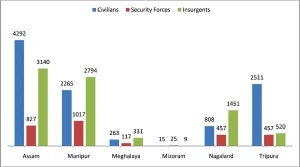
Figure 1: Overall Fatalities due to insurgency in India’s Northeast 1992-2016 (Assam, Manipur, Meghalaya, Mizoram, Nagaland and Tripura)
A macro-view of six states of Northeastern India that have witnessed violence by armed groups shows some critical trends. Data extrapolated from the South Asia Terrorism Portal (SATP) indicates that more than 21000 people have lost their lives in insurgency related violence since 1992 in Assam, Manipur, Meghalaya, Mizoram, Nagaland and Tripura.
Data for injured is not available thus contributing to an underestimation of the overall conflict burden. However, any act of violence in a situation of insurgency is only an outcome of a broader chain of decision-making and is only one part of a much larger process which starts with the recruitment itself.
The Puzzle of Rebel Recruitment
An examination of official Ministry of Home Affairs (MHA) reports published between 2007 and 2016 indicates that Arrests and Surrenders of insurgents significantly outweigh incidences of violence. While arrests are normally seen as a marker of success, the numbers tend to mask the fact that recruitment into the groups is still an ongoing phenomenon. In terms of participation in armed organizations between 2007 and 2015 more than 18610 suspected insurgents have been arrested, 2776 killed and 7656 have surrendered (See Figure 2). Not under consideration in the numbers are the non-combatants who are recruited to participate by providing logistics and other forms of indirect support.
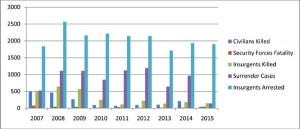
Figure 2: The Puzzle of Rebel Recruitment: Composite Overall Trends in Insurgency Related Fatalities, Arrests and Surrenders for Arunachal Pradesh, Assam, Manipur, Meghalaya, Mizoram, Nagaland and Tripura (2007-2015)
The mechanism of recruitment involves a wide range of factors and occupies an interim space between voluntarism and coercion. The imperative to choose the life of a rebel (or revolutionary) could be seen as a voluntary act caused by a sense of injustice, a perceived sense of wrong, ideological indoctrination, the search for power and the examples set by immediate peers joining the movements. In this case recruitment systems existing allows individual to cross-over to the groups (both physically and psychologically) and join training in a designated safe-haven.
A second determinant is the role played by coercion and conscription. In this case the recruitment process is akin to human trafficking, especially in terms of its economic basis and also in its ability to completely eradicate or subsume individual freedom to the manpower requirements of the group. It is important to remember that regardless of the metrics being described, the techniques and systems of recruitment into insurgent groups’ remains resilient.
A major problem that should be further addressed is that the age-profile of those joining the groups is lowering with a significant number of children joining these organizations.[i] The recruitment of children poses special problems for S&R. There is no separate component in the existing policy that treats child insurgents as a distinct category for the rehabilitation process despite the existence of the “Protocols for Police and Armed Forces in Contact with Children in Areas of Civil Unrest” that were formulated by the National Commission for Protection of Children Rights (NCPCR).[ii] It must be remembered that recruitments systems continuously adapt to their changing political environment; an environment that is shaped not only by the pace of military operations but also by the degree of ethnic and political unrest, the lack of employment opportunities and new forms of technology.
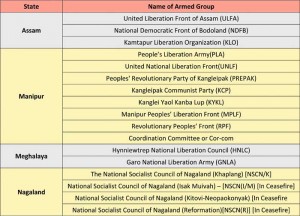
Table 1: Major Insurgent Groups in the North Eastern States Declared As “Unlawful Associations” And “Terrorist Organizations” Under the Unlawful Activities (Prevention) Act, 1967
The Existing S&R Template
There are three distinct “Surrender” and “Rehabilitation” policies that are currently being implemented: Jammu and Kashmir, the Maoist or “Naxal” insurgency and the insurgent movements in Northeastern India. Whereas the MHA provides funding and broad guidelines, states are also encouraged to develop their own templates. The comprehensive “Surrender” and “Rehabilitation” Guidelines for the conflict-affected states of Northeastern India was enacted by the MHA in 1998 with many subsequent modifications.
Although these policies resemble Demobilization, Disarmament and Rehabilitation (DDR) that have been implemented for armed groups internationally, it is distinct because it is an endogenous solution with roots in the various amnesty arrangements that were practiced in early post-independence insurgencies in the Northeast. Contrary to international experience, whereby DDR occurs as part of a final peace settlement, the policy in India is more of an operational measure that moves parallel to other security measures (and local level peace negotiations). Furthermore, it occupies an intermediate space between violence and detention, thus providing individuals a critical exit option.
At the core of the various S&R policies currently in place is the principle that regardless of the time spent as an insurgent there are incentives and channels open especially at the tactical level to “surrender” and consequently avail of “rehabilitation” package. Conversely, a lot of flexibility is provided to operational commanders for initiating discussions and inducing surrenders (directly or indirectly). Some of the essential features of the current S&R guidelines[iii] include:
- An immediate cash-grant provided in the form of a fixed deposit and the provision of a stipend over a period of one year for individuals who have availed of the offer. In the case of Manipur, the amount is currently Rs. 2.5 Lakhs with a monthly stipend of Rs. 4,000.
- The provision of monetary incentives to hand over weaponry, equipment and ammunition.
- Lodging in “rehabilitation camps” which is supposed to be supervised by a Non-Governmental Organization.
- The waiver of judicial proceedings pertaining to the commission of minor crimes by the surrenderees.
- The provision of vocational training to facilitate reintegration, the return to normalcy and seek out livelihood opportunities.
Evaluating S&R Policies
An evaluation of the existing S&R policy provides mixed results. By extrapolating data from MHA Annual Reports published between 2003 and 2016 (See Figure 3) we see possibly see an inverse linkage between violence and insurgent rehabilitation.
In other words, an increase in the number of surrenders in marked by a reduction in overall violence, while a decrease in surrenders marks and increase in violence. In terms of the effectiveness and impact of the S&R framework we further systematic ground-level evidence is required.
The fact that since 2002 nearly 12000 individuals have exercised the choice to return back to a non-violent context is itself a positive indicator. However, the rapid fall of surrenders in 2015 is marked by a marginal decline in arrests and a gradual increase in fatalities. This possibly hints at an unofficial moratorium on the surrender channel since the 2015 ambush in Manipur, the long-term consequences of which would be catastrophic for those seeking to return (and possibly lead to some degree of incremental violence).
Returning to the actual process of surrenders, as evidenced in various regions, it found that the surrendered insurgents constitute some of the most vulnerable demographic segments in the communities once they return. Apart from experiencing the past trauma of being recruited (and in many cases when they were children) and witnessing violence firsthand, they run the risk of being targeted repeatedly by their former affiliate organizations,[iv]security forces[v] or being employed as counter-insurgents themselves. A case in point being the past operations being conducted by the Ikhwan in Jammu and Kashmir (J&K)[vi] and Surrendered ULFA (SULFA) in Assam.[vii]
Another aspect of the S&R policy which requires further reconsideration is the notion of “rehabilitation” itself. Despite modifications, rehabilitation has not expanded beyond economic incentives and livelihoods. Thus for instance the focus is only on vocational training and skills development, without any support for schooling or higher education. Another aspect of rehabilitation is psychological recovery and community acceptance, which will require a much more expansive role for civil society. In addition, rehabilitation require a much longer programme cycle, well beyond the current range of the one year of support that is provided.
Conclusion
The existence of the S&R mechanisms is an extremely important pathway that complements the various peace negotiations and ceasefires that are currently in place in the Northeast. The notion of amnesty which underlies the existing S&R policy sets a very important precedent for other democracies fighting insurgencies.
The fact that both the Centre and State governments encourage members of the armed movement to not only exit, but the possibility to also rebuild their lives, points to the importance of non-violent solutions in conflict areas. At the same time the mechanics of the policy are flexible enough to ensure that the exercise of the choice to rehabilitate is facilitated by local level operational commanders.
However, it is the post-surrender situation that is most problematic and holistic approaches to S&R must be institutionalized (beyond its instrumental purpose) to ensure a more permanent attempt at a genuine conflict transformation and reconciliation.
[i] Asian Centre for Human Rights (ACHR), 2013. “India’s Child Soldiers,” Available at https://www.achrweb.org/reports/india/JJ-IndiasChildSoldiers2013.pdf
[ii] National Commission for Protection of Child Rights (NCPCR), “Protocols for: Police and Armed Forces in Contact With Children In Areas of Civil Unrest” Available at: http://ncpcr.gov.in/view_file.php?fid=464
[iii]See Ministry of Home Affairs, Annual Report, 2015-2016, p.18.http://mha.nic.in/sites/upload_files/mha/files/AR(E)1516.pdf
[iv] The Northeast Today, “Manipur: Surrendered militants shot dead in ‘safe house’”. Available at: http://thenortheasttoday.com/manipur-surrendered-militants-shot-dead-in-safe-house/
[v] The Indian Express, “Imphal encounter: 6 years later, the admission — ‘Yes, I shot him dead, he was unarmed, officer told me to”. Available at: http://indianexpress.com/article/india/india-news-india/imphal-encounter-6-years-later-the-admission-yes-i-shot-him-dead-he-was-unarmed-officer-told-me-to/
[vi] Praveen Swami, “India’s Forgotten Army,” Available at: http://www.thehindu.com/2003/09/14/stories/2003091406170800.htm
[vii] Ajay Sahni and Bhibhu Prasad Routray, “SULFA: Terror by Another Name”. Available at: http://www.satp.org/satporgtp/publication/faultlines/volume9/Article1.htm




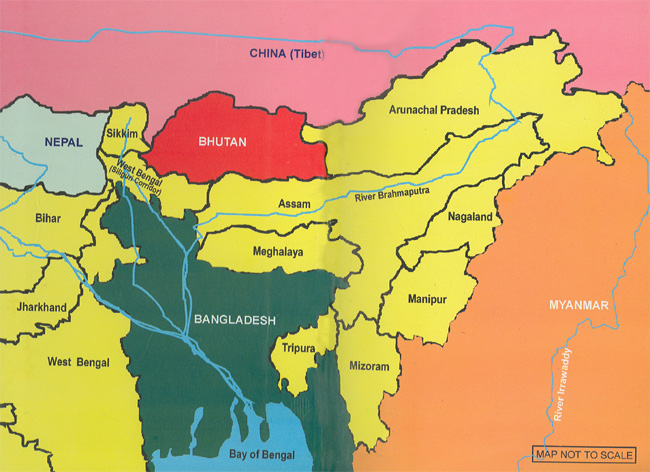
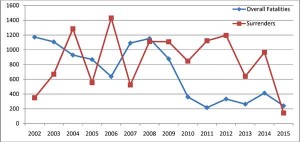

I am glad to read your article on S&R policy in placed to purportedly end the ‘unrecognized internal armed conflicts in NER. In fact, your concluding line is precisely the approach i personally took and visited at least two camps and assessed the indignities the inmates have to suffer once they surrender their arms.
The very word “surrender” indicates the treatment of these combatants who once fought for a cause. There are also instances of playing up ‘surrender functions” as psychological warfare against those who would rather choose to lay down their lives for the cause. Such surrender policy in practice is actually working as condemnation of those who raised their arms against the State.
Surrender policy bereft of proper reintegration and resettlements of the ex-combatants into their homes, community and society as responsible citizens participating in democratic processes of resolving the conflicts is part of the counter-insurgency campaign. This is limited to symptomatic treatment and deliberate attempts suppressed the consequences of the wrong committed by the State against others histories.
Realizing that many from among armed groups eventually tire out and withdraw from active engagements should be seen as an opportunity for transforming the hardened souls into responsible citizens. A critical review of the surrender policy, in this regard, as per the international norms, standards and procedures, as suggested in your article, is the need of the hour.
Thanks